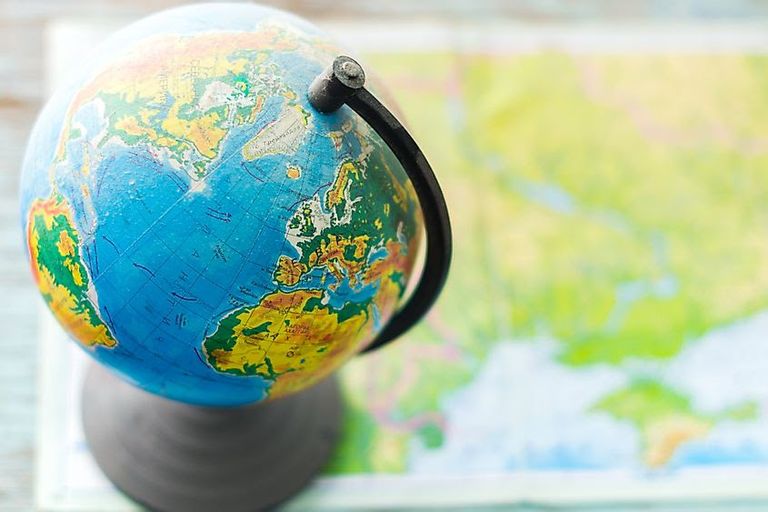LATITUDE
Latitude is the angular distance of a point on the earth's Surface. It is measured in degrees from the centre of the earth. Latitude (0°) which is also called the Equator, divides the earth into two equal halves; The Northern and Southern hemispheres. All other latitudes are parallel to the equator and to each other, hence, the latitudes are also called Parallels of
Latitude.
Uses of Lines of Latitude
The lines of latitude in conjunction with that of the longitude are used to determine the exact location of places on the atlas map.
Lines of latitudes are also used to calculate the distance between two places on the earth's surface.
LONGITUDE
The Longitude is an imaginary line drawn on the globe (earth) which runs from north to south at right angle to the parallels. It is the angular distance measured in degrees east and west of the Greenwich Meridian. All the lines of longitude which run from north to south are called Lines of Longitude.
The Longitude passing through London (Britain) and Accra (Ghana) is called the Great Prime or Greenwich Meridian and it is put at longitude 0°. All other longitudes are called Meridians and are numbered in degrees East and West of longitude 0⁰.
Uses of lines of longitude
The lines of longitude in conjunction with the latitude are also used to determine the exact location of places on the atlas map.
They are also used to determine the exact time between two places.
DIFFERENCES BETWEEN MERIDIANS AND PARALLELS
- Meridians are lines of longitudes while parallels are lines of latitudes.
- Meridians are drawn from north to south while parallels are drawn from west to east.
- Distance between two meridians decreases towards the poles while in that of the parallels the distance is constant.
- Meridians have equal length while parallels have different lengths (circumferences).
- Meridians meet at the poles while parallels
never meet. - Meridians are marked 0° - 180° East and West of the Greenwich while parallels are marked 0° -90° North and South of the Equator.
- The Equator is a point of reference of all lines of latitude whereas the Greenwich is a reference point of the longitudes.
- Meridians are used to calculate time while parallels are used to calculate distance.
Similarities of Lines of latitude and lines of longitude
- They are both imaginary lines drawn on the globe.
- They are measured in degrees.
- They are used to locate places on the
map. - They contain great circles.
Differences between lines latitude and lines of longitude
| Lines of Latitude | Lines of Longitude |
|---|---|
| 1) Run from West to East | Run from North to South |
| 2) Parallel to each other | Not parallel to each other |
| 3) Get shorter towards the North and South poles | Are of the same length |
| 4) The equator is the only great circle | Has many great circles as any opposite pairs of lines make a great circle |
| 5) They are called parallels | They are called Meridians |
| 6) They are used to measure distance | They are used to measure time |
| 7) The equator is it's reference point | The Greenwich Meridian is it's reference point |
Thank you for stopping by and for your continuous support.
